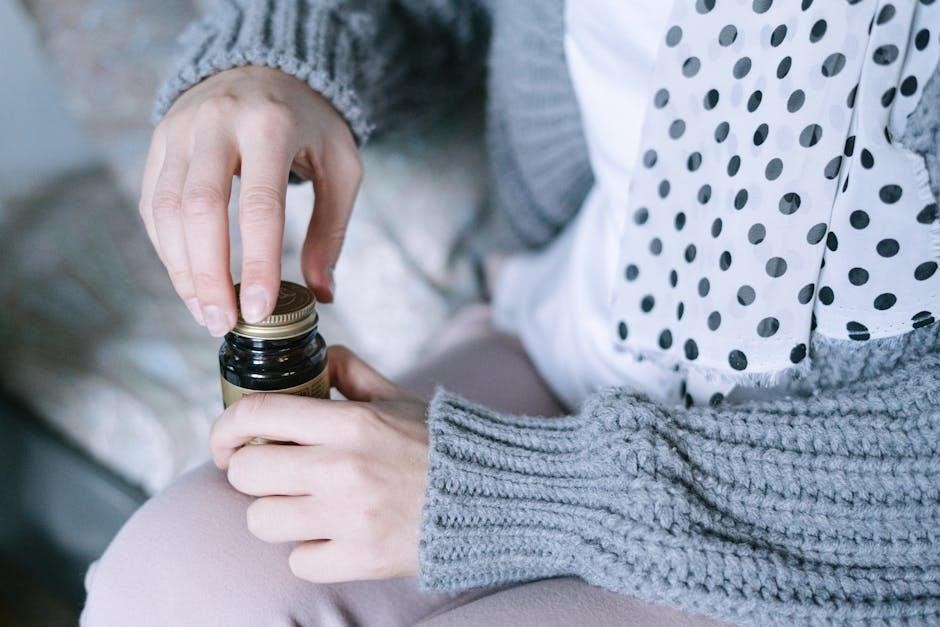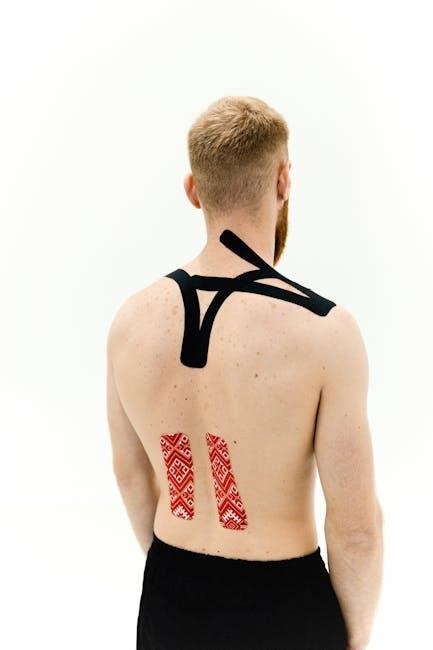SOAP notes are a structured documentation method in physical therapy, ensuring effective patient care and clear communication among healthcare providers. They maintain accurate records, continuity of care, and support legal and billing processes.
1.1 What Are SOAP Notes?
SOAP notes are a standardized method of documentation used in physical therapy, standing for Subjective, Objective, Assessment, and Plan. They provide a clear, structured format for recording patient interactions, treatment progress, and future plans. The Subjective section captures patient-reported information, while the Objective section documents observable data like range of motion or strength. The Assessment synthesizes this information to guide clinical decision-making, and the Plan outlines the next steps in treatment. SOAP notes ensure consistency, clarity, and effective communication among healthcare providers, making them essential for patient care and legal documentation. They are widely used in physical therapy practices to maintain accurate and comprehensive records.
1.2 Importance of SOAP Notes in Physical Therapy
SOAP notes are crucial for effective communication and continuity of care in physical therapy. They ensure that patient information is documented consistently, providing a clear record of progress and treatment plans. By standardizing documentation, SOAP notes enhance collaboration among healthcare providers, reduce errors, and improve patient outcomes. They also serve as a legal and billing record, justifying skilled interventions and ensuring compliance with regulatory standards. Accurate SOAP notes help track patient responses to treatment, guiding clinical decision-making and supporting reimbursement processes. Their structured format makes them an indispensable tool for maintaining high-quality, patient-centered care in physical therapy settings.

Components of a SOAP Note
A SOAP note consists of four key sections: Subjective, Objective, Assessment, and Plan. Each section captures specific patient information, ensuring comprehensive and organized documentation of care.
2.1 Subjective (S)
The Subjective section captures the patient’s perspective, including their chief complaint, history of present illness, and any changes or pain levels. It documents what the patient reports, such as symptoms, concerns, and new developments. This section is crucial for understanding the patient’s experience and baseline status. Information is typically gathered through patient interviews, focusing on their narrative and perceived improvements or declines. The S section provides context for the rest of the SOAP note, guiding the clinician’s objective assessment and treatment plan.
2.2 Objective (O)
The Objective section documents measurable, observable data gathered during the patient’s assessment. This includes range of motion, strength, gait, and any visible signs like swelling or ecchymosis. Clinicians use tools such as goniometers for range of motion and manual muscle testing for strength. The O section provides quantifiable information, such as the degrees of joint mobility or seconds held in a position, to track progress. It also notes the time spent on specific interventions and the patient’s physical responses during treatment. This data is crucial for forming an accurate assessment and adjusting the treatment plan effectively.
2.3 Assessment (A)
The Assessment section interprets the data gathered from the Subjective and Objective sections, providing a clinical judgment of the patient’s progress. It identifies whether the patient is improving, plateauing, or regressing. This section links the interventions performed to the patient’s responses, such as pain levels or functional improvements. The Assessment also justifies the need for continued skilled care, ensuring that the treatment remains relevant and effective. By analyzing the patient’s reaction to therapies, clinicians can adjust the plan to better meet the patient’s needs, ensuring a tailored approach to care and optimal outcomes.
2.4 Plan (P)
The Plan section outlines the next steps in the patient’s care, detailing specific interventions, goals, and modifications to the treatment plan. It is future-focused, guiding the direction of therapy based on the patient’s progress and responses observed in the Assessment. The Plan should include measurable objectives, such as increasing range of motion or strength, and specify any changes to exercises, modalities, or patient education. It ensures continuity of care and serves as a roadmap for achieving the patient’s functional goals. The Plan also documents any referrals or follow-ups needed, ensuring a coordinated approach to the patient’s rehabilitation journey.

Best Practices for Writing SOAP Notes
Use clear, concise language, avoid jargon, and ensure consistency. Document patient responses and progress accurately. Regularly review and update notes to reflect current treatment plans and outcomes effectively.
3.1 Clarity and Conciseness
Clarity and conciseness are essential in SOAP notes to ensure effective communication. Use straightforward language, avoid vague terms, and focus on relevant details. Be specific when documenting patient symptoms, observations, and responses to treatment. For example, instead of noting “pain,” specify the type, location, and intensity. Conciseness prevents unnecessary information overload, making notes easier to read and reference. This approach ensures that all healthcare providers involved in the patient’s care can quickly understand the key points and make informed decisions. Clear documentation also supports accurate billing and legal compliance, safeguarding both the patient and practitioner.
3.2 Use of Specific Terminology
Using specific terminology in SOAP notes ensures precision and avoids ambiguity. Incorporate standardized terms and anatomical references to clearly describe observations, interventions, and patient responses. For example, instead of stating “improved mobility,” specify “increased active range of motion in the shoulder (0-120°).” This clarity aids in tracking progress and communicating effectively with other healthcare providers. Avoid vague language like “pain” without detailing its characteristics. Use professional jargon appropriately, such as “strength grading” or “gait deviation,” to convey clear, measurable data. This practice enhances the credibility and utility of the documentation, ensuring consistency and accuracy in patient care.
3.4 Documenting Patient Responses
Accurately documenting patient responses is crucial for tracking progress and guiding treatment. Note specific reactions to interventions, such as pain levels, functional improvements, or emotional feedback. Use clear, objective language to describe changes, like “pain reduced from 7/10 to 4/10” or “increased tolerance to exercises.” Record both positive and negative outcomes to provide a comprehensive view of the patient’s status. This documentation helps in adjusting treatment plans and ensures continuity of care. It also supports legal and billing processes by demonstrating the rationale behind clinical decisions. Detailed patient responses enhance the overall quality and utility of SOAP notes.

Common Mistakes to Avoid in SOAP Notes
Vagueness, omitting patient feedback, and lack of specific details are common errors. Ensure clarity in documenting observations, responses, and plans to avoid miscommunication and legal issues.
4.1 Vagueness in Documentation
Vagueness in SOAP notes can lead to miscommunication and ineffective care. Avoid using non-specific terms like “improved” or “worse” without quantifiable details. For example, instead of stating “pain decreased,” specify the reduction on a pain scale (e.g., “pain reduced from 7/10 to 4/10”). Similarly, document observable changes like “increased range of motion by 10 degrees” rather than “showing progress.” Vague language hinders continuity of care and may lead to legal or billing issues. Always include measurable data and clear observations to ensure precise communication and accountability in patient care.
4.2 Overlooking Patient Feedback
Overlooking patient feedback in SOAP notes can hinder effective care and communication. Failing to document patient-reported changes, such as pain levels or functional improvements, reduces the note’s utility. For instance, omitting details like “patient reports decreased pain during walking” or “patient states improved ability to perform daily tasks” can lead to miscommunication among providers. This oversight may result in inappropriate treatment adjustments and continuity of care issues. Always prioritize capturing patient responses and subjective experiences to ensure comprehensive and patient-centered documentation, which is vital for legal and billing purposes as well as for maintaining high-quality care standards.

SOAP Note Examples
SOAP notes provide structured documentation, covering conditions like knee pain, post-ACL rehabilitation, and chronic shoulder pain, ensuring clear communication and effective patient care through detailed examples.
5.1 Example: Knee Pain and Dysfunction
A 50-year-old female presents with right knee pain and stiffness for three months. She reports difficulty walking, climbing stairs, and rising from a seated position. Pain is described as dull with sharp episodes during weight-bearing activities.
Objective: Limited knee flexion (0°-110°), mild swelling, and tenderness around the patella. Gait shows a slight limp, avoiding full weight-bearing on the right leg.
Assessment: Knee pain likely due to patellofemoral dysfunction, exacerbated by activity. Strength is 4/5 in the right quadriceps.
Plan: Initiate strengthening exercises for the quadriceps and hamstrings, patellar mobilization, and modalities for pain management. Patient education on activity modification and proper movement techniques.
5.2 Example: Post-ACL Reconstruction Rehabilitation
A 25-year-old male, six weeks post-ACL reconstruction, presents for outpatient physical therapy. He reports limited knee mobility and discomfort with weight-bearing activities.
Objective: Knee flexion limited to 0°-90°, mild effusion, and tenderness along the graft site. Quadriceps strength is 3/5, with a noticeable extensor lag. Gait is antalgic, with partial weight-bearing on the right leg.
Assessment: Early-stage ACL reconstruction recovery with expected limitations in ROM and strength. Emphasis on improving mobility and reducing inflammation.
Plan: Progress ROM exercises, initiate light strengthening for the quadriceps and hamstrings, and utilize modalities for pain management. Patient education on proper movement techniques to avoid complications.

Templates and Tools for SOAP Notes
Downloadable PDF templates and AI tools streamline SOAP note creation, saving time and enhancing documentation accuracy for physical therapists. These resources provide structured formats for consistent reporting.
6.1 Downloadable PDF Templates
Downloadable PDF templates for physical therapy SOAP notes provide a structured format, ensuring consistency and efficiency in documentation. These templates include sections for Subjective, Objective, Assessment, and Plan, with examples to guide clinicians. They are customizable to fit specific patient needs and practices, saving time during documentation. Many templates are free and easily accessible online, offering a professional and organized way to present patient information. By using these templates, therapists can maintain accurate and comprehensive records, enhancing patient care and communication among healthcare providers. They are particularly useful for students and new clinicians learning to structure SOAP notes effectively.
6.2 AI Tools for Efficient Documentation
AI tools are revolutionizing SOAP note documentation in physical therapy by streamlining the process and reducing time spent on paperwork. These tools utilize machine learning to auto-fill common phrases, suggest appropriate terminology, and even generate sections based on clinical data. For example, SOAPNote AI helps physical therapists complete notes faster, allowing more focus on patient care. These tools also learn from the user’s documentation style over time, improving accuracy and efficiency. By integrating AI, clinicians can maintain high-quality records while minimizing administrative burdens, ensuring better patient outcomes and smoother communication among healthcare providers.

The Role of Technology in SOAP Note Documentation
Technology enhances SOAP note efficiency through AI tools, EMR integration, and automated templates, improving accuracy, saving time, and promoting better patient care and communication.
7.1 AI and Automation
AI and automation revolutionize SOAP note documentation by streamlining the process, reducing errors, and saving time. Tools like SOAPNote AI assist in generating notes, suggesting phrases, and auto-filling common sections. These technologies learn from user input, improving over time. Automation ensures consistency, accuracy, and compliance with documentation standards. AI-powered tools also help in quickly accessing patient data, tracking progress, and identifying trends. By minimizing administrative burdens, AI enables physical therapists to focus more on patient care and less on paperwork, enhancing overall efficiency and patient outcomes.
7.2 Electronic Medical Records (EMR) Integration
Integrating SOAP notes with Electronic Medical Records (EMR) systems enhances documentation efficiency and accessibility. EMRs allow seamless inclusion of SOAP notes, ensuring all patient data is centralized and easily retrievable. This integration supports consistency in documentation, reduces duplication of efforts, and improves communication among healthcare providers; Features like templates and smart phrases within EMRs streamline the SOAP note creation process. Additionally, AI tools integrated with EMRs can auto-populate sections, further simplifying documentation. This digital approach not only saves time but also ensures accurate and comprehensive patient records, ultimately improving care coordination and outcomes.

Tips for Clinicians and Students
Observe experienced clinicians during documentation, noting effective phrases. Use EMR smart phrases to complement your writing. Build a personal library of impactful phrases for efficient SOAP note creation.
8.1 Observing Experienced Clinicians
Observing experienced clinicians during documentation is invaluable for mastering SOAP notes. Pay attention to how they structure their notes, focusing on clarity and conciseness. Note the specific terminology they use to describe patient symptoms, objective findings, and treatment responses. This helps in understanding how to effectively communicate patient progress and treatment plans. Additionally, observe how they integrate smart phrases from EMRs to streamline documentation without compromising detail. By learning from their techniques, you can develop a systematic approach to writing SOAP notes, ensuring comprehensive and professional documentation that enhances patient care and communication among healthcare providers.
8.2 Building a Personal Library of Phrases
Building a personal library of phrases is a practical strategy to enhance SOAP note documentation. Start by collecting effective phrases observed during clinicals or from experienced clinicians. Note phrases that clearly describe symptoms, objective findings, and treatment responses. Organize these phrases into categories, such as pain descriptions or exercise modifications, for easy access. Regularly update your library with new phrases that prove effective in practice. This approach reduces documentation time and ensures consistency, allowing you to focus on patient care while maintaining professional and precise SOAP notes.

Specialized SOAP Notes for Specific Conditions
Specialized SOAP notes address specific conditions, ensuring targeted documentation. Examples include chronic shoulder pain and cervical radiculopathy, providing clear treatment plans and tracking progress effectively.
9.1 Chronic Shoulder Pain Management
SOAP notes for chronic shoulder pain management require detailed documentation of symptoms, functional limitations, and treatment responses. The subjective section includes patient-reported pain levels, duration, and aggravating factors. Objective findings might note reduced range of motion, strength deficits, or scapular dyskinesis. The assessment links these observations to underlying impairments, such as rotator cuff weakness or poor posture. The plan outlines specific exercises, manual therapies, or modalities to address these issues. Regular updates in SOAP notes track progress, ensuring tailored interventions and justifying skilled care. This structured approach enhances communication and supports effective, patient-centered management of chronic shoulder pain.
9.2 Cervical Radiculopathy Treatment
SOAP notes for cervical radiculopathy treatment focus on documenting symptoms, functional limitations, and treatment outcomes. The subjective section includes patient-reported pain, numbness, or tingling, often radiating into the arm. Objective findings may note positive Spurling’s test, reduced cervical range of motion, or neurological deficits. The assessment links these findings to nerve root irritation or compression. The plan outlines interventions like cervical traction, manual therapy, or exercises to address posture and strength. Progress is tracked to refine treatment, ensuring effective management of symptoms and functional improvement. SOAP notes provide a clear, structured approach to documenting and guiding care for cervical radiculopathy.

Enhancing Patient Care Through Effective Documentation
SOAP notes ensure clear communication among providers, promoting accurate records and continuity of care. They enhance patient outcomes by documenting progress and guiding informed decision-making effectively.
10.1 Improving Communication Among Healthcare Providers
SOAP notes play a crucial role in enhancing communication among healthcare providers by ensuring clarity and consistency in documentation. They provide a standardized format for sharing patient information, making it easier for multidisciplinary teams to understand treatment plans and progress. By documenting subjective complaints, objective findings, assessments, and plans, SOAP notes facilitate seamless collaboration. This clear communication reduces misunderstandings, ensures continuity of care, and supports better patient outcomes; Effective SOAP notes also help in tracking patient progress over time, enabling healthcare providers to make informed decisions collectively.
10;2 Ensuring Accurate Medical Records
SOAP notes are essential for maintaining accurate and detailed medical records in physical therapy. They provide a clear and organized structure for documenting patient information, ensuring that all relevant details are captured. By including subjective complaints, objective observations, assessments, and plans, SOAP notes create a comprehensive record of patient care. This accuracy is vital for legal compliance, billing purposes, and future reference. Additionally, SOAP notes help track patient progress, ensuring that treatments are evidence-based and outcomes-driven. Accurate documentation also supports accountability and transparency in patient care, making SOAP notes a cornerstone of professional practice.